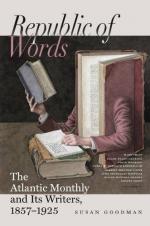“Under the same head, we are led to infer that it is only in ’the warm and moist nights of summer,’ that ’the moon, as she rises above the horizon, appears much larger than when at the zenith’; and we are taught, in connection with the origin of the mirage and the spectre of the Bracken, that ’rainbows are due to this condition of the atmosphere.’ If, instead of rainbows, we may be allowed to read halos, we can understand the writer, who, instead of thinking of summer showers, appears to have had a haze in his mind while penning this and other paragraphs.”
[The dictum of our correspondent in regard to light passing from a ponderable medium into a vacuum requires some qualification. An exception should be made of “Spiritual Mediums,” who, being flesh and blood, are of course ponderable. Now, if we represent the Medium by A, and the head of any one consulting her by B, there can be no doubt that the latter is an absolute vacuum; but it is demonstrable that nothing like light ever passed from the former to the latter. There is a closer analogy between refracted light and a Brocken spectre than our scientific friend seems willing to admit. For what follows we refer our readers to the remarkable essay of Alderman Moon, “On the Identity of Halocination and Lunacy.”]
“9. As our author advances in this branch of his subject, he grows far too profound for our scientific apprehension. Giving him all credit for wishing to be clear, we confess to a sad mystification as to what he calls the ‘Polarity of Light,’ where a beam is described as ’revolving around poles peculiar to itself’ and as producing ’beautiful spectres,’ and we want new illumination from him as to his theory of colors. We agree to the statement that ’each object has a particular reflecting surface of its own,’ as we cannot see how its particular surface could be the property of another,—but why this should make the surface ‘throw back light at its own angle’ we do not exactly fathom, and we are puzzled to know which is the owner of the said angle, the light or the surface. No one doubts that ’the modest blush which crimsons the cheek of beauty,’ to use the author’s words, is caused by a rush of blood to the skin; but how this produces ’a corresponding change in its angle of reflection,’ and what such a change has to do with the result, are problems too transcendental for the exact sciences.”




